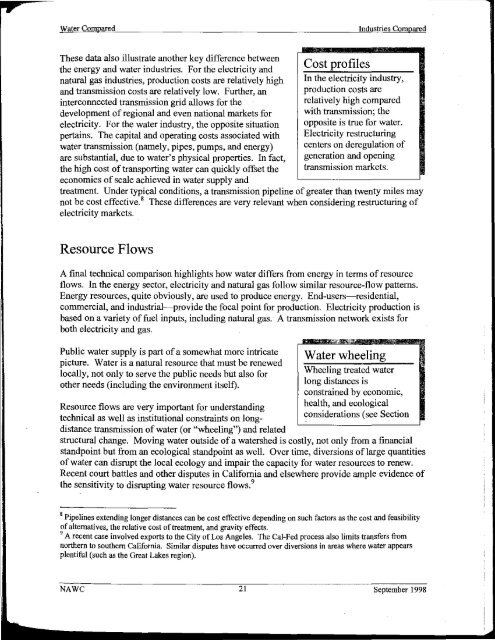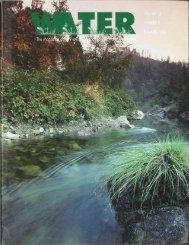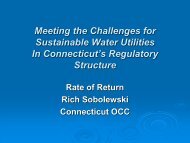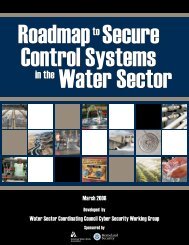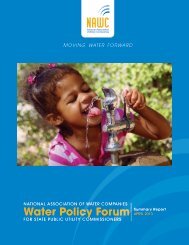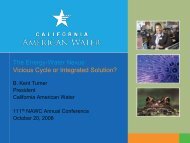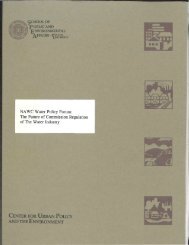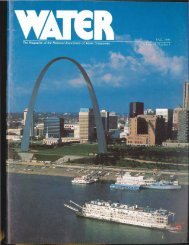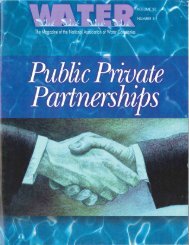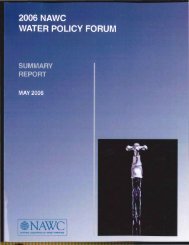BEECHER - NAWC
BEECHER - NAWC
BEECHER - NAWC
You also want an ePaper? Increase the reach of your titles
YUMPU automatically turns print PDFs into web optimized ePapers that Google loves.
Water ComparedIndustries ComparedThese data also illustrate another key difference betweenthe energy and water industries. For the electricity andnatural gas industries, production costs are relatively highand transmission costs are relatively low. Further, aninterconnected transmission grid allows for thedevelopment of regional and even national markets forelectricity. For the water industry, the opposite situationpertains. The capital and operating costs associated withwater transmission (namely, pipes, pumps, and energy)are substantial, due to water's physical properties. In fact,the high cost of transporting water can quickly offset theeconomies of scale achieved in water supply andCost profilesIn the electricity industry,production costs arerelatively high comparedwith transmission; theopposite is true for water.Electricity restructuringcenters on deregulation ofgeneration and openingtransmission markets.treatment. Under typical conditions, a transmission pipeline of greater than twenty miles maynot be cost effective. 8 These differences are very relevant when considering restructuring ofelectricity markets.Resource FlowsA final technical comparison highlights how water differs from energy in terms of resourceflows. In the energy sector, electricity and natural gas follow similar resource-flow patterns.Energy resources, quite obviously, are used to produce energy. End-users-residential,commercial, and industrial-provide the focal point for production. Electricity production isbased on a variety of fuel inputs, including natural gas. A transmission network exists forboth electricity and gas.Public water supply is part of a somewhat more intricatepicture. Water is a natural resource that must be renewedlocally, not only to serve the public needs but also forother needs (including the environment itself).Resource flows are very important for understandingtechnical as well as institutional constraints on longdistancetransmission of water (or "wheeling") and relatedWater wheelingWheeling treated waterlong distances isconstrained by economic,health, and ecologicalconsiderations (see Sectionstructural change. Moving water outside of a watershed is costly, not only from a financialstandpoint but from an ecological standpoint as well. Over time, diversions oflarge quantitiesof water can disrupt the local ecology and impair the capacity for water resources to renew.Recent court battles and other disputes in California and elsewhere provide ample evidence ofthe sensitivity to disrupting water resource flows. 98Pipelines extending longer distances can be cost effective depending on such factors as the cost and feasibilityof alternatives, the relative cost of treatment, and gravity effects.9A recent case involved exports to the City of Los Angeles. The Cal-Fed process also limits transfers fromnorthern to southern California. Similar disputes have occurred over diversions in areas where water appearsplentiful (such as the Great Lakes region).<strong>NAWC</strong> 2I September I 998


